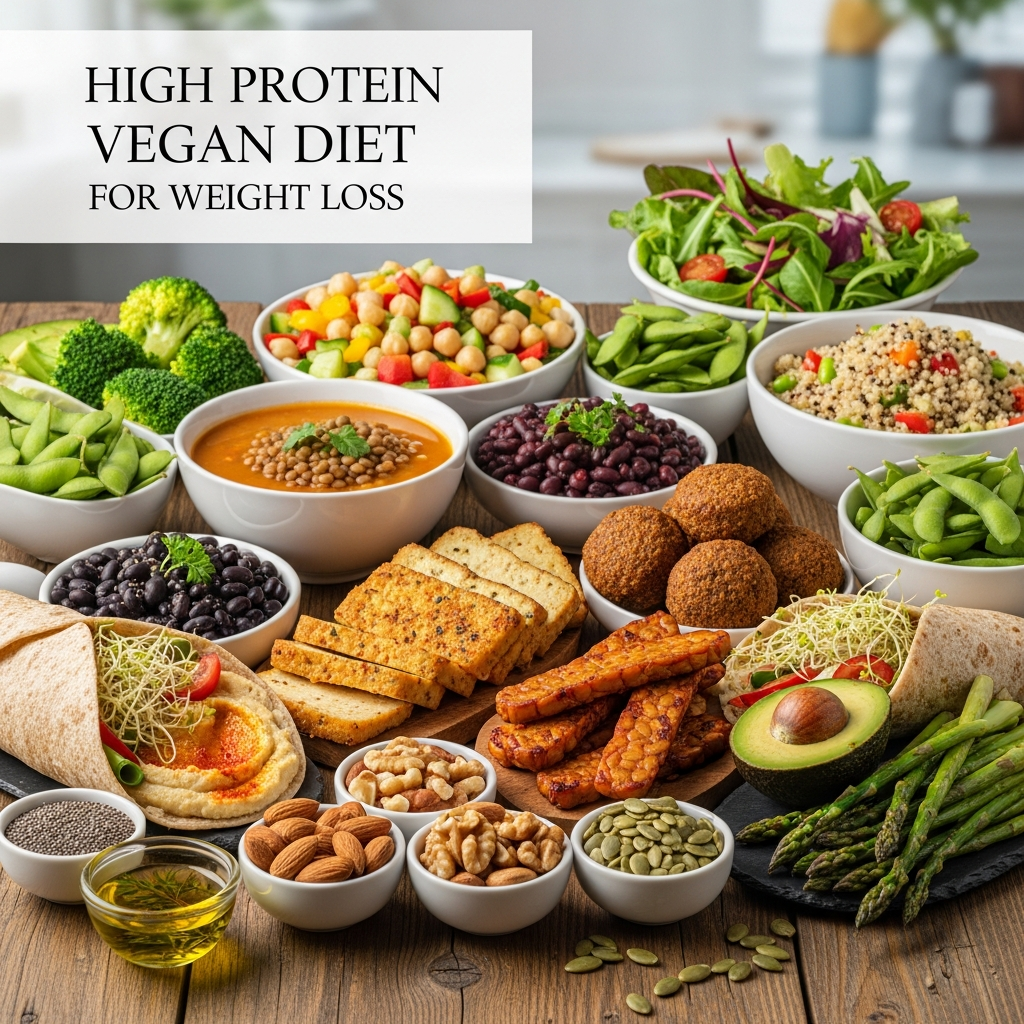


Introduction
A well-organized healthy eating meal plan for wellness as well as supporting you for physical health, it also supports your emotional well-being. As a result of a healthy diet, your body is able to perform at its peak, just as gasoline is essential for a car to run smoothly. In order to satisfy your taste buds and to address your dietary concerns, you can prepare meals by combining a variety of nutrients and flavors to suit your preferences.
The following helpful tips and techniques can assist you in creating a meal plan that suits your lifestyle and enables you to maintain healthy eating habits that are sustainable, enjoyable, and sustainable.
Understanding Healthy Eating Meal Plan
Understanding what healthy eating meal plan for wellness before you begin your journey towards a healthier lifestyle, you should take the time to understand what it entails before you start.
A low-fat diet is a diet that promotes a balanced intake of fruits, vegetables, whole grains, lean meats, and healthy fats while minimizing the consumption of processed food, sweets, and unhealthy fats. This means that you should provide your body with the nutrients it requires in order to operate at its best and to support your overall health and well-being in the long run.
What it healthy eating meal plan for wellness
The main idea behind a healthy eating meal plan for wellness is that you should eat a range of foods in the right amounts to stay healthy or get healthier. To put it another way, you should eat foods that are excellent for your body and full of nutrients to stay healthy both mentally and physically.
The Benefits of healthy eating meal plan for wellness
A healthy diet can help you lose weight and also make you feel better, give you more energy, and clear your mind. Eating a balanced diet and maintaining a healthy weight will help you digest food better, strengthen your immune system, and lower your risk of having chronic diseases.
Eating well has two benefits: it lowers your risk of diabetes, heart disease, and some cancers, and it makes it simpler to lose weight. Making sensible decisions will not only help you in the short term, but they will also help your health in the long run, which will make your life better over time.
Things that happen a lot that people don’t get
Before you modify your diet, you need get rid of some prevalent illusions about what it means to eat healthy. People think that to eat properly, you have to follow tight rules and give up things, and that to eat badly, you have to spend a lot of time and money.
To explain that a healthy meal plan doesn’t have to be hard or constrained, you need to get rid of these false assumptions. There are various ways to accomplish it, and if you value balance over perfection, it might be fun and last a long time. You can add healthy foods to your meals without spending too much money. If you plan ahead, you can also make sure they fit into your hectic schedule. You need to know these things if you want to eat properly without getting stressed out.
Key Components of a Healthy Eating Meal Plan for Wellness
Now that you understand the fundamentals of a healthy eating meal plan for wellness, it’s time to investigate the essential elements that will help you on your future path to improved nutrition. You can make sure you are getting the nutrition and energy you need to thrive and live a long, healthy life by include these ingredients in your meals.
Macronutrients Overview
Nutrient rich food : The macronutrients—fats, proteins, and carbs—must be taken into account in order to maintain a healthy diet. One of the most vital sources of energy for the body, this food should be ingested in the right proportions based on your demands and activity level. Knowing how each macronutrient works can help you make decisions that will support your best health.
Micronutrients: Vitamins and Minerals
The health of your body is also greatly influenced by micronutrients, which are part of the macronutrient group. Vitamins and minerals promote a number of body processes, including energy production and the immunological response. It is recommended that you include a range of fruits, vegetables, whole grains, and lean proteins in your diet to meet your micronutrient needs.
Although the macronutrients give the body energy, the micronutrients aid in the regulation of numerous bodily functions. Vitamins and minerals are essential for maintaining the smooth operation of your body and your overall health, from bone health to cognitive function. A diverse range of foods should be included in your meal plan to ensure that you are getting all the micronutrients you require.
The Importance of Hydration
Without a doubt, staying hydrated is one of, if not the most, crucial aspects of your general health. Water helps with energy levels, digestion, and nutrition absorption, all of which contribute to optimal bodily function. Make it a habit to be hydrated at all times because it’s crucial to consume lots of water with every meal and snack you have in order to stay hydrated throughout the day.
In a broad sense, the significance of being hydrated cannot be overstated. When you are properly hydrated, your body can regulate body temperature, enhance mental function, and support joint health. Prioritizing your water intake will enhance your general health and balance the macro and micronutrients in your diet, even if it is simple to forget.
Creating a Balanced Meal Plan
Your balanced meal plan should make sure that you attain balance among all food categories if you want to guarantee that you receive the nutrients you require. Fruits, vegetables, whole grains, lean proteins, and healthy fats should all be a priority in your diet. In addition to improving your body’s overall health and fitness, a holistic approach to eating also helps you sustain your energy levels and effectively and healthily manage your weight.
How often and when to eat
When and how often to eat healthy foods To keep your appetite and digestion under control, you need to plan when and how often you eat. Eat three healthy meals and snacks every day if you need to. A regular meal plan can help keep your blood sugar levels steady and discourage you from wanting to eat too much later in the day.
When you eat is very important for your metabolism and your health in general. Eating every three to five hours is the best way to keep your energy up all day. Your body will be able to manage meals better, and you won’t feel like you’re missing out, which makes it simpler to stick to your healthy eating plan.
Putting in some new items
To maintain your diet balanced, you should eat a lot of different meals every day. Eat a variety of fruits, vegetables, grains, and protein sources every week to make sure you get a lot of different nutrients. To keep your diet interesting and avoid bad eating habits that could cause you gain weight, you should explore diverse foods and cuisines.
Making a plan for your meals
Planning your meals is a great way to remain on track with your weight loss goals since it makes you think about what you eat instead of just eating whatever you want. It will be easier for you to make healthy choices all week if you are more inclined to stick to your plans.
Making Plans and Setting Goals
Always remember that setting clear goals and objectives is the best method to plan meals. To attain your goals, you need to know exactly what you want to get out of eating properly. This could be losing weight, staying energized, or just eating more meals that are high in nutrition. You can use these personal goals to help you decide what to eat.
Planning meals that are good for you
When you have to choose nutritious foods and keep care of your money, it can be hard to make meals that are good for you. If you put aside a particular amount of money each week for groceries, you can buy healthy items without spending too much. It could be easier to plan and buy meals if you create a budget that works for you.
When you cook on a budget, you don’t have to give up quality to save money. Buy things that are in season, buy in bulk, and use promotions and coupons whenever you can to save money. By establishing a shopping list based on your meal plan, you may also stay within your budget and choose nutritious foods.
How to Cook Meals
If you plan beforehand, you’ll do better when you cook. Cooking a few meals ahead of time will help you make the most of your week and always have healthy food on hand.
Meal planning first makes it easy to cook and eat healthy. You can design your own recipes, divide up snacks, and prepare meals that can be frozen. You can even prepare a lot of fundamental things at once, like grains and proteins.
Healthy eating meal plan for wellness Try
For a lot of people, following a structured diet plan might help them on their way to eating better. Following a well-structured meal plan will help you stay organized, choose healthier foods, and make sure your diet has a variety of nutrients.
Template for a Weekly Meal Plan
It is crucial to create a template that will work for you if you want to ensure that your healthy eating meal plan will be effective. Make a weekly meal planning sheet with spaces for breakfast, lunch, supper, and snacks, as well as a place to write notes. If you do this, you will be able to see the bigger picture and make the changes you need to make.
Ideas for breakfast
Ideas for nutritious meals: Eating a healthy breakfast sets the tone for a productive morning, especially on a busy day. Healthy breakfast options include smoothie bowls, overnight oats, and a substantial breakfast of scrambled eggs with spinach and whole grain toast. The choices you make here will offer you energy and important nutrients that will help you get through the day.
Change vary the recipes for breakfast every week to keep it tasty and healthy. You may have yogurt with granola and fresh fruit on top on Monday and chia seed pudding with berries on top on Tuesday.
Ideas for lunch and dinner
Making balanced lunches and dinners is one of the most important things you can do to eat well. Think about adding healthy grains, a variety of lean proteins, and a lot of vegetables to your diet. There are a lot of excellent and filling choices, such baked salmon with steamed broccoli or quinoa salads with grilled chicken on top.
One of the best ways to eat well is to plan balanced lunches and dinners. You might want to think about adding healthy grains, a variety of lean proteins, and a lot of vegetables to your diet. There are many delectable and filling choices, such baked salmon with steamed broccoli or quinoa salads with grilled chicken on top.
Snack Options
Before you grab for packaged snacks, think about more satisfying but healthier options. This will assist you in choosing a healthier option. Greek yogurt, mixed nuts, or sliced veggies with hummus are some of the options that can help you maintain consistent energy levels throughout the day.
Make sure you always have wholesome snack foods on hand for any travel, including portioned servings of fruit or trail mix that are easily accessible. This can assist you in avoiding the temptation to eat unhealthy snacks that will cause you to gain weight when you are hungry in between meals.
Making Healthy Eating Meal Plan for Wellness that work for certain diets
You need to adjust your healthy eating meal plan to accommodate different preferences and nutritional needs. This helps us make sure that your diet is good for your health and fits with how you live.
Food for vegans and vegetarians
There are many vegetarian and vegan foods available that come in a variety of flavors and have different health advantages to satisfy your needs. Eat a lot of grains, legumes, and vegetables. Concentrate on plant-based proteins like lentils, chickpeas, and tofu, which are all good sources of protein. This plan will help you eat better and be healthier in general.
There are many plant-based dishes that vegetarians and vegans can eat that don’t have gluten in them. You can consume a lot of different plant-based dishes without worrying about gluten with these meals. Eating foods like quinoa, brown rice, and fresh fruits and vegetables will help you obtain all the nutrients you need if you follow gluten-free regulations.
When making a gluten-free meal plan, you need to be careful about which foods you choose so that you don’t accidentally mix them up or find gluten in unexpected places. Read the labels on everything you buy to see if it has gluten in it, like sauces, dressings, and ready-made meals.
Make your daily meal plan work for you and your lifestyle. Try out several recipes and flavors until you find the ones you like most. You will feel better and have more energy in the long run if you promise to eat healthy.
FAQ
Q. What are the most crucial aspects of a Healthy Eating Meal Plan for Wellness
A healthy eating meal plan usually includes a lot of different meals so that you may obtain all the nutrients you need. The main pieces are:
Eating a lot of different kinds of fruits and vegetables in different colors and forms will provide you the most vitamins and minerals.
Brown rice, quinoa, and whole wheat bread are all fantastic choices because they are abundant in minerals and fiber.
Lean Proteins: Chicken, fish, beans, and lentils are all good for your muscles and help your body perform well.
Almonds, avocados, seeds, and olive oil are all healthy fats that are good for your heart.
Something that tastes like milk or milk: Pick dairy products that are low in fat or plant-based foods that are high in calcium and vitamin D.
Q: How can I design a Healthy Eating Meal Plan for Wellness that only I can follow?
A: To construct a meal plan that helps you eat well, think about what you like, what you need, and what you want to do. To receive help, do these things:
Consider your age, how often you move, any health issues you may have, and the reasons you desire to reduce weight.
Plan ahead: You should determine what you want to get out of your diet, like decreasing weight, gaining muscle, or just being healthy in general.
Choose Foods You Enjoy: To make it more probable that you’ll stick to your diet, choose a variety of healthy meals that you like to consume.
Make a plan for what you’re going to eat and when: Plan your meals for the week so that you have three dinners and two snacks every day. Make sure that every meal offers a good mix of foods from all the groups.
You don’t want to get bored with your meal plan, so make sure it can handle modifications and new foods.
Q: What can I do to make it simpler to prepare meals when I want to eat well?
A: Preparing meals in advance will help you stick to your healthy eating plan and save you time. Here are some items that can help you:
Plan ahead: Once a week, compile grocery lists and plan your meals. This will make sure you have everything you need.
Put things in boxes: Get some good containers to keep meals that are ready to eat fresh and easy to get to.
Snack Packs: Prepare snacks like yogurt, nuts, or fruit ahead of time so you can get them quickly.
Plan: Make cooking your meals a regular part of your week so you can eat better over time.
Related Content
- 14 Ways to Increase Protein Intake Daily Tips
- Fuel Your Body Right: 6 Best Ultimate Guide to Smart Nutrition
- 6 Tips To How To Maintain A Healthy Weight ?
- Best Weight Loss Nutrition
- 4 Week Diet Plan for Weight Loss






































